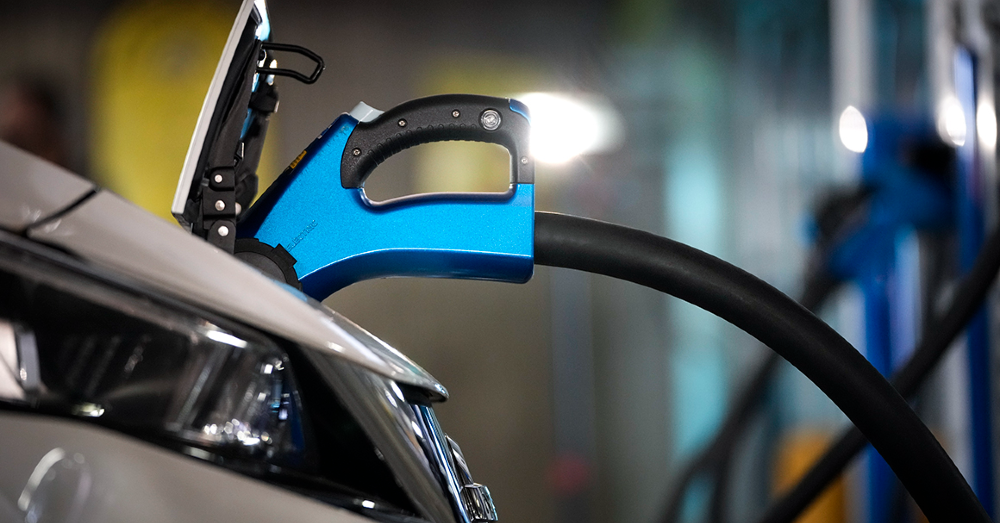
Electric Vehicles: Is the Push by the President Too Aggressive?
In a decade mired with a pandemic and industrial setback, does it make sense to be aggressive in the move from gasoline to electric vehicles?
When the current President took office, the general hope was for a calming force in the Executive Office, but one of the first actions by President Biden was to announce a goal of replacing the entire government fleet of gasoline vehicles with EVs. This goal was penned into action recently with a plan that’s been laid out to ensure all vehicles in the federal fleet will be powered by electricity by 2035.
The Initial Reaction Was Predictable
Initially, when the President announced the plan to replace the government fleet with EV models, the responses were predictable. The political landscape we have lived in for the past several years is extremely split, with very few bipartisan ventures taking place. With this in mind, those who oppose President Biden were not in favor of his desire to have a government fleet that uses only electricity, while those in support of the President were glad to see the environmentally-friendly nature of this action. Now that we see the plan in place, the goals set seem achievable for the more than 600,000 vehicles that are part of this fleet.
An Additional Requirement in the Bill
The bill to replace all government vehicles with electric vehicles by 2035 includes a pledge to transition all light-duty vehicles to only zero-emission models by 2027. That only gives automakers a few years to help transition all vehicles for the federal government to EV and other zero-emission models. This is an aggressive approach, but it’s not one that has an ending with only the government fleet being changed to EV models for the future.
Part of the Build Back Better Plan is Upsetting Canada
If you think our political landscape is extremely divided, imagine cutting off potential business from one of the richest nations in the world. The Build Back Better plan has language in it that would grant increased tax credits for EV and zero-emission vehicles purchased that have been built at factories represented by a labor union while also having US-produced batteries. This credit would eventually transition to allow only EVs assembled in the US with these batteries to receive any of the proposed credit. Currently, all EV models are eligible for a portion of the tax credit.
Canada has already drafted a letter of opposition to this plan while also listing products that would be tariffed heavily when exported out of the United States and into Canada. Rather than create a seamless program that would include our neighbors to the north and south, the President has created a virtual hard border and steadfast rules regarding which vehicles would be eligible for these tax credits. You can’t expect Canada to take this sitting down, and they aren’t, with desires to charge high fees if the plan continues to move forward in its current form.
Some Automakers Are Also Upset
Keep in mind, the verbiage used in the Build Back Better plan is the tax credit will be for electric vehicles that are produced by union workers. This leaves out several companies that employ thousands of autoworkers but do not negotiate with a union. That means EV models from Tesla, Honda, Toyota, and Volkswagen would be among the vehicles that would not be eligible for the maximum tax credit.
Currently, all EVs are eligible for some form of the federal tax credit, but the amount increases for vehicles that are produced at union plants with US-made batteries.
Emissions Are Being Reduced
One of the greatest benefits of the proposed EV fleet of government vehicles and the incentives for owners to change to electric vehicles is the reduction in emissions being expelled into the atmosphere. The plan being put in place requires a reduction of emissions by 65 percent by 2030 and a zero-emissions vehicle world by 2050. To make this happen, President Biden signed an order to make half of all new vehicles sold in the United states fully-electric or plug-in hybrid models by 2030. This gives automakers several years to update their fleet for the future.
Are These Goals Too Aggressive?
Should we have only focused on coming out of the Pandemic and working to put things back to the way they were before this virus hit the world? Strangely, it might be years before we truly feel that things are back to “normal,” and for some people, that may never come. We now live in a world where more people have begun to work from home after being forced to during the pandemic shutdown. Food delivery services are on the rise and have only gotten better since first being offered.
While we may yearn for a time that was pre-pandemic, we are in a new world, and that might mean the new leadership has to take aggressive action and put these long-term plans in place to ensure our environment is protected going forward. Unfortunately for President Biden, nearly every action taken has been met with strong opposition, but that is to be expected of most proposals in a heavily divided political arena. You might think the EV goals are too aggressive or that we should protect or neighboring nations, but the wheels have been set in motion, but not all have passed through Congress just yet.
Will Changes Be Made to the Plan?
The current version of the Build Back Better plan will be altered, likely several times, before it finally becomes a bill that is put into effect. Will one of the changes be to include EVs and batteries made in Canada to help avoid tariffs by this country? Will the timelines be changed to put goals at lower expected percentages for the future?
Every President is expected to take aggressive action when taking over, and that has been part of what President Biden has done. Thankfully, his plans have lengthy timelines that automakers should be able to meet to give us an interesting future filled with electric vehicles.
This post may contain affiliate links. Meaning a commission is given should you decide to make a purchase through these links, at no cost to you. All products shown are researched and tested to give an accurate review for you.



